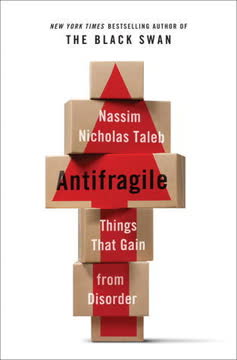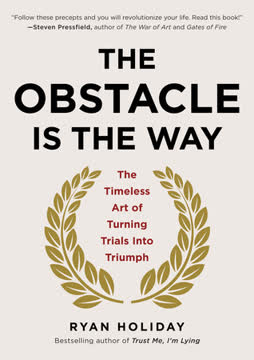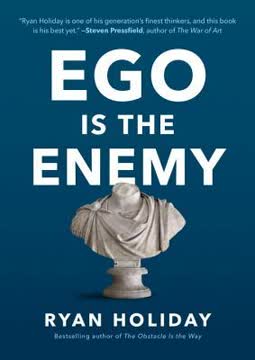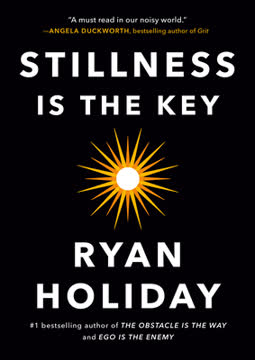Key Takeaways
1. Resilience is a learnable skill, not an innate trait
Research shows that resilience is normal and involves ordinary skills and resources.
Resilience defined. Resilience is the ability to adapt and cope well with adversity, stress, and challenges. It's not about avoiding difficult emotions or experiences, but rather about maintaining psychological flexibility and continuing to pursue valued goals despite setbacks.
Components of resilience. Key components of resilience include:
- Self-awareness
- Emotional regulation
- Optimism
- Problem-solving skills
- Strong social connections
- Sense of purpose
Developing resilience. Resilience can be cultivated through:
- Practicing mindfulness and acceptance
- Clarifying personal values
- Learning problem-solving techniques
- Building social support networks
- Engaging in relaxation exercises
- Challenging negative thought patterns
2. Mindfulness and acceptance are key to managing stress
Ironically, when distress is accepted it appears to reduce anyway and perhaps in a more elegant and natural way than when we try to fight against our feelings.
Mindfulness practice. Mindfulness involves paying attention to the present moment without judgment. It helps reduce stress by:
- Increasing awareness of thoughts and emotions
- Reducing rumination and worry
- Enhancing emotional regulation
- Improving focus and concentration
Acceptance strategies. Acceptance doesn't mean resignation, but rather a willingness to experience thoughts and feelings without trying to change or avoid them. This approach:
- Reduces the struggle with uncomfortable experiences
- Allows emotions to run their natural course
- Frees up mental energy for problem-solving and valued actions
3. Clarify personal values to guide decision-making and actions
To be resilient is to remain committed to following your personal values despite facing adversities, including unpleasant experiences such as pain and anxiety, and to regain your commitment whenever it falters.
Identifying values. Values are guiding principles that reflect what's most important in life. They differ from goals in that they are ongoing directions rather than endpoints. Examples include:
- Integrity
- Compassion
- Growth
- Creativity
- Connection
Living according to values. Aligning actions with personal values:
- Provides a sense of purpose and meaning
- Increases motivation and commitment
- Enhances decision-making in difficult situations
- Improves overall life satisfaction
4. Problem-solving skills enhance adaptability to challenges
Problem-solving is an established methodological approach, a form of cognitive-behavioural therapy, that research has shown to be effective for a wide range of issues.
Problem-solving steps:
- Define the problem clearly
- Generate multiple potential solutions
- Evaluate the pros and cons of each option
- Choose and implement the best solution
- Review the outcome and adjust as needed
Benefits of effective problem-solving:
- Increases confidence in handling challenges
- Reduces stress and anxiety
- Improves decision-making abilities
- Enhances overall resilience and adaptability
5. Social support and assertiveness contribute to emotional resilience
Research on resilience consistently points to the importance of having appropriate sources of social support in place, such as emotional support and encouragement from friends and family, etc.
Building social support. Strong social connections are crucial for resilience. Strategies to enhance social support include:
- Cultivating existing relationships
- Joining groups or communities with shared interests
- Volunteering or engaging in community activities
- Seeking professional support when needed
Developing assertiveness. Assertiveness involves expressing one's needs, opinions, and feelings effectively while respecting others' rights. Key assertiveness skills include:
- Using "I" statements
- Setting clear boundaries
- Saying "no" when necessary
- Expressing disagreement respectfully
- Requesting what you need or want
6. Progressive relaxation techniques reduce physical and mental tension
It's important to understand that by 'relaxation', from a physiological perspective, Jacobson meant muscle relaxation, which he specifically defined as the complete absence of all contraction or 'tension', i.e., the release and lengthening of the muscles fibres.
Progressive muscle relaxation (PMR). This technique involves systematically tensing and relaxing different muscle groups to achieve deep relaxation. Benefits include:
- Reduced physical tension
- Decreased anxiety and stress
- Improved sleep quality
- Enhanced body awareness
Practicing PMR:
- Find a comfortable position
- Focus on a specific muscle group
- Tense the muscles for 5-10 seconds
- Release the tension and focus on the sensation of relaxation
- Move to the next muscle group
- Repeat the process throughout the body
7. Worry postponement helps manage anxiety more effectively
Worry postponement has been integrated with some of the mindfulness and acceptance-based strategies discussed earlier, especially becoming 'centred' in the present moment and 'engaged' with intrinsically valued action.
Understanding worry. Worry is a chain of thoughts focused on potential future negative outcomes. While some worry can be productive, excessive worry often leads to anxiety and stress.
Implementing worry postponement:
- Identify worrying thoughts
- Schedule a specific "worry time" each day
- When worries arise outside of this time, acknowledge them and postpone until the designated worry time
- During worry time, address concerns constructively or use problem-solving techniques
Benefits of worry postponement:
- Reduces overall time spent worrying
- Increases present-moment awareness
- Improves ability to focus on current tasks
- Enhances overall emotional well-being
8. Stoic philosophy offers timeless wisdom for building resilience
What, then, is to be done? To make the best of what is in our power, and take the rest as it naturally happens.
Key Stoic principles for resilience:
- Focus on what's within your control
- Accept what cannot be changed
- Cultivate virtue and wisdom
- Practice self-discipline and moderation
- Embrace challenges as opportunities for growth
Applying Stoic wisdom:
- Use rational thinking to challenge unhelpful beliefs
- Practice negative visualization to appreciate what you have
- Reflect on your actions and learn from experiences
- Cultivate a sense of duty and purpose beyond personal desires
- Develop emotional equanimity in the face of adversity
Last updated:
FAQ
What is "Build Your Resilience" by Donald J. Robertson about?
- Focus on psychological resilience: The book explores how ordinary people can adapt and cope well with adversity by developing skills like problem-solving, emotional regulation, and social competence.
- Integrative approach: Donald J. Robertson combines evidence-based cognitive-behavioural therapy (CBT) with modern mindfulness and acceptance-based therapies, especially Acceptance and Commitment Therapy (ACT).
- Practical self-help guide: Readers are provided with a step-by-step plan to build resilience, emphasizing values clarification, acceptance, mindfulness, relaxation, and social skills for thriving in any situation.
Why should I read "Build Your Resilience" by Donald J. Robertson?
- Preventative and general wellbeing: The book aims to enhance resilience for both current and future adversities, improving overall quality of life rather than just fixing specific problems.
- Evidence-based strategies: It draws on well-researched psychological therapies, including CBT, ACT, and relaxation training, ensuring scientifically supported advice.
- Holistic and accessible: Robertson integrates ancient Stoic philosophy with modern psychology, making the content practical and relevant for everyday challenges.
What are the key takeaways and focus points from "Build Your Resilience" by Donald J. Robertson?
- Skill acquisition and practice: Building resilience is likened to learning a physical skill, requiring systematic practice of techniques like Progressive and Applied Relaxation, worry postponement, and assertiveness.
- Mindfulness and acceptance: Central themes include accepting internal experiences, practicing cognitive defusion, and cultivating present-moment awareness to reduce unhelpful emotional reactions.
- Philosophical integration: Stoicism is presented as a timeless framework, emphasizing control over actions, acceptance of external events, and living in accordance with personal values.
How does Donald J. Robertson define psychological resilience in "Build Your Resilience"?
- Positive adaptation: Resilience is described as “patterns of positive adaptation during or following significant adversity,” relying on everyday skills like problem-solving and emotional regulation.
- Commitment to values: Robertson frames resilience as the ability to remain committed to one’s core values despite setbacks, rather than simply eliminating distress.
- Dynamic process: Resilience is seen as an ongoing, flexible process of coping well and bouncing back, not about being perfect or emotion-free.
What are the main risk and protective factors for resilience according to "Build Your Resilience"?
- Risk factors: These include childhood developmental issues, daily hassles, major setbacks (like bereavement or illness), and the stress of seeking greater meaning or purpose.
- Protective factors: Social support from family, friends, and community is highlighted as the most consistent protective factor, along with self-acceptance, confidence, and emotional regulation.
- Experiential avoidance: Attempts to control or avoid unpleasant internal experiences often backfire, increasing distress and reducing resilience.
What is experiential avoidance and why is it important in "Build Your Resilience" by Donald J. Robertson?
- Definition: Experiential avoidance is the unhelpful effort to suppress, control, or avoid unpleasant thoughts, feelings, or memories—a core concept in ACT.
- Counterproductive effects: Trying to avoid or control internal experiences often worsens emotional suffering and interferes with living according to values.
- Creative hopelessness: The book encourages letting go of futile control efforts and instead cultivating psychological flexibility through mindful acceptance and valued action.
How does "Build Your Resilience" by Donald J. Robertson explain values clarification and its role in resilience?
- Values as life directions: Values are described as ongoing, intrinsic life directions (e.g., “acting with integrity”) that guide actions, not just specific goals.
- Distinction from goals: Values provide meaning and motivation, while goals are specific, achievable outcomes that serve those values.
- Foundation for resilience: Clarifying values helps define what resilience means personally and motivates individuals to face emotional challenges.
What does "Build Your Resilience" by Donald J. Robertson say about commitment to valued action?
- Central to resilience: Acting according to core values despite internal barriers is presented as the essence of emotional resilience.
- Goal-setting and planning: The book recommends setting SMART goals (Specific, Measurable, Achievable, Relevant, Time-limited) aligned with values and scheduling value-driven activities.
- Overcoming barriers: It distinguishes between external (practical) and internal (psychological) barriers, suggesting problem-solving for the former and mindfulness/acceptance for the latter.
What are acceptance and cognitive defusion, and how do they contribute to resilience in "Build Your Resilience"?
- Acceptance: Willingness to fully experience unpleasant thoughts and feelings without struggling against them, in service of valued living.
- Cognitive defusion: Techniques for seeing thoughts as mental events rather than literal truths, reducing their emotional impact (e.g., labeling thoughts, imagining them as leaves on a stream).
- Psychological flexibility: Together, acceptance and defusion foster an “open” response style, increasing flexibility and enabling value-driven action despite internal challenges.
How does "Build Your Resilience" by Donald J. Robertson describe mindfulness and its role in resilience?
- Mindfulness as ‘centred’ responding: Mindfulness involves present-moment awareness and adopting the perspective of self-as-observer, complementing acceptance and defusion.
- Reducing rumination and worry: Mindfulness helps limit unproductive rumination about the past and worry about the future, common in anxiety and depression.
- Practical exercises: The book includes mindfulness practices like mindful eating, body scans, and brief meditations to cultivate awareness and flexibility in daily life.
What is Progressive Relaxation and how is it used in "Build Your Resilience" by Donald J. Robertson?
- Scientific muscle relaxation: Progressive Relaxation (PR) involves systematically tensing and releasing muscle groups to achieve deep relaxation and reduce residual tension.
- Stepwise training: The book outlines a five-week program, starting with seven muscle groups and progressing to fewer groups and relaxation by recall, making the practice efficient and effective.
- Resilience benefits: PR reduces physical and mental tension, improves stress tolerance, and complements mindfulness and acceptance strategies.
How does "Build Your Resilience" by Donald J. Robertson integrate Stoicism into modern resilience-building?
- Philosophical origins: Stoicism, an ancient philosophy, teaches distinguishing what is within our control from what is not, influencing modern CBT and resilience methods.
- Core principles: The Stoics advocated focusing on one’s own actions and intentions, accepting external outcomes with equanimity, and living in accordance with Nature.
- Practical exercises: The book introduces Stoic practices like the “reserve clause,” the “View from Above,” and contemplating the ideal Sage to foster perspective, acceptance, and value-driven living.
Review Summary
Build Your Resilience receives mostly positive reviews, with readers praising its practical approach and evidence-based strategies. Many appreciate the book's foundation in Stoicism and modern therapeutic techniques like ACT. Reviewers find it informative and packed with useful exercises, though some note its academic tone may be challenging for casual readers. The book is lauded for its focus on self-acceptance and building resilience through personal values and goals. Some readers found it dense but rewarding, while others felt it repeated concepts from other self-help books.
Similar Books










Download PDF
Download EPUB
.epub digital book format is ideal for reading ebooks on phones, tablets, and e-readers.









